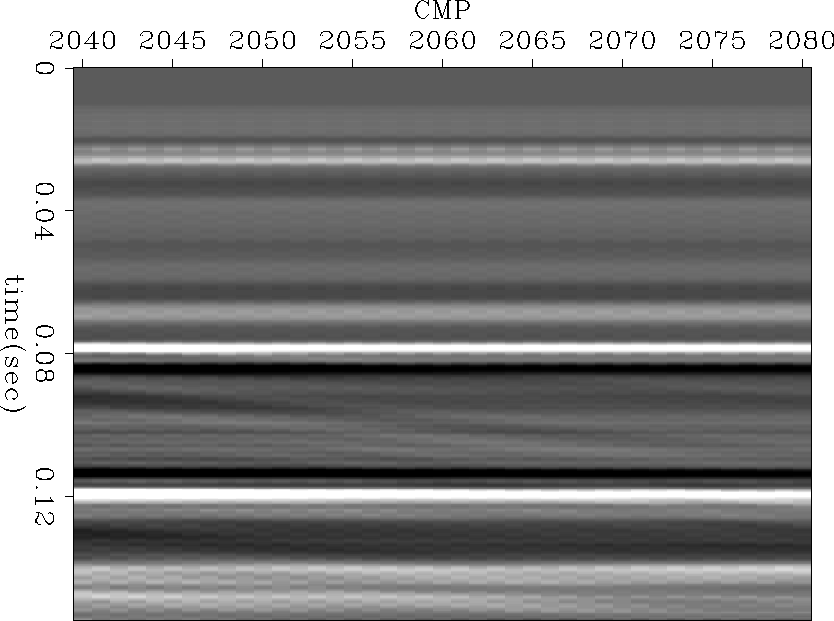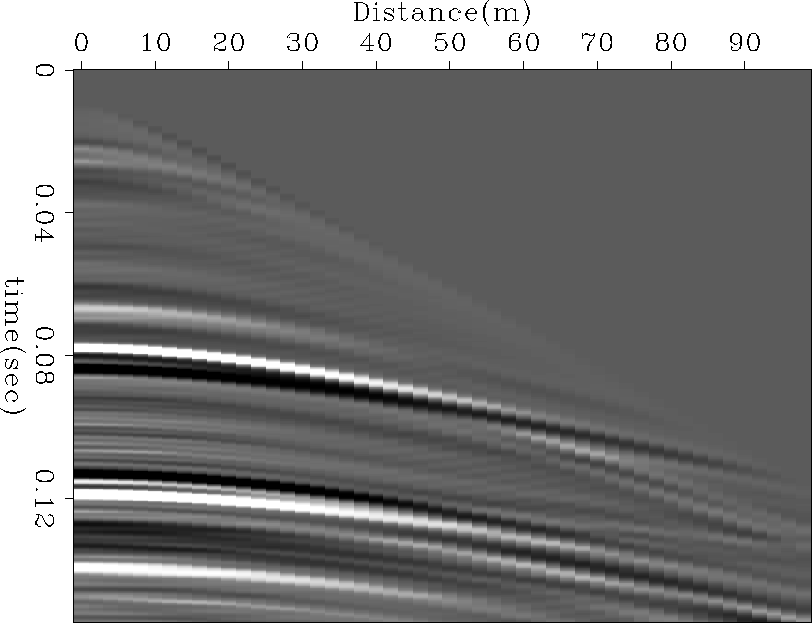The section created from the original brine-saturated model is shown in Figure 14. The first
thing to notice is that the amplitudes for the reflections are not very strong. This is because the impedance
contrast between the two is not enough to generate a strong reflection. The reflection present does exhibit the
180o phase change which is expected from a wave reflecting off a layer with lower impedance Sheriff and Geldart (1995). The
reflection from the bottom of the body is also present. This reflection does not show the ![]() phase change
because the lower unit has a relatively high impedance. The offset in the brine gathers,
Figure 15, does not show any
particular change with offset, except that the expected decrease in amplitude with offset is observed.
An equation which relates P-wave reflection amplitude with increasing angle (or offset) is Shuey's approximation:
phase change
because the lower unit has a relatively high impedance. The offset in the brine gathers,
Figure 15, does not show any
particular change with offset, except that the expected decrease in amplitude with offset is observed.
An equation which relates P-wave reflection amplitude with increasing angle (or offset) is Shuey's approximation:
| |
(9) |
where ![]() is Poisson's ratio, R0 is the normal incidence reflection coeffecient, and E is a term involving the
velocity and density changes Mavko (2000). Basically this equation, and other AVO equations, show that with little change in
Poisson's ratio over a contact, the amplitude should decrease with offset, which is observed in the Figure 15.
is Poisson's ratio, R0 is the normal incidence reflection coeffecient, and E is a term involving the
velocity and density changes Mavko (2000). Basically this equation, and other AVO equations, show that with little change in
Poisson's ratio over a contact, the amplitude should decrease with offset, which is observed in the Figure 15.
 |
|
oil_cmp
Figure 17 CMP from oil section at midpoint 2100m. |  |